FROM SHEM TO ABRAHAM part-1
Now we will take up the line of Shem since it is the line which will be followed throughout the Old Testament.
Genesis 11:10-21 KJV
[10] These are the generations of Shem: Shem was an hundred years old, and begat Arphaxad two years after the flood:
[11] And Shem lived after he begat Arphaxad five hundred years, and begat sons and daughters.
[12] And Arphaxad lived five and thirty years, and begat Salah:
[13] And Arphaxad lived after he begat Salah four hundred and three years, and begat sons and daughters.
[14] And Salah lived thirty years, and begat Eber:
[15] And Salah lived after he begat Eber four hundred and three years, and begat sons and daughters.
[16] And Eber lived four and thirty years, and begat Peleg:
[17] And Eber lived after he begat Peleg four hundred and thirty years, and begat sons and daughters.
[18] And Peleg lived thirty years, and begat Reu:
[19] And Peleg lived after he begat Reu two hundred and nine years, and begat sons and daughters.
[20] And Reu lived two and thirty years, and begat Serug:
[21] And Reu lived after he begat Serug two hundred and seven years, and begat sons and daughters.
Genesis 11:10
These are the generations of Shem: Shem was an hundred years old, and begat Arphaxad two years after the flood:
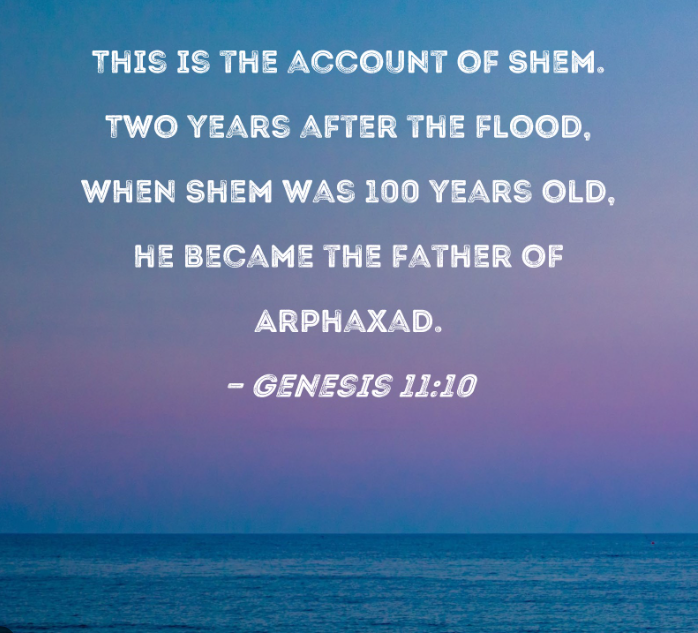 The Tower of Babel incident of Genesis 11:1–9 is tied to the genealogical table of chapter 10 by the reference to Nimrod, a grandson of Noah’s son Ham, at 10:8–12.
The Tower of Babel incident of Genesis 11:1–9 is tied to the genealogical table of chapter 10 by the reference to Nimrod, a grandson of Noah’s son Ham, at 10:8–12.
The Babel narrative serves to explain what has preceded and what will follow by connecting the development of distinct nations and cultures to the corresponding distribution of languages.
Following this story, the author resumes the account of the line of Noah’s son Shem.
The list in Genesis 11 shows that God’s earlier promise in 3:15—that Eve’s “seed” would bruise the head of the serpent, an allusion to Christ’s victory on the cross—ultimately could not be stopped by the chaos following Babel.
Even though Noah’s descendants are scattered and divided, God’s purpose to redeem His creation through a chosen line is not compromised.
This verse begins a genealogy that will directly link Noah’s son Shem with Abram, whom God will re-name Abraham (Genesis 17:5). This sets up the origins of the people of Israel.
Unlike the broad, nation-spanning genealogies in chapter 10, this passage tracks a straight line from each man to one of his sons to the next in the line. This description begins with Shem.
Of the three sons of Noah, Shem is the one who is overtly blessed by God (Genesis 9:26). We are told here that Shem fathered Arpachshad two years after the flood when he was 100 years old.
This is the last mention of the flood in Genesis, marking the beginning of a new era. The birth of Arpachshad so quickly after God’s command to multiply and fill the earth shows that Shem was living in obedience.
Genesis 11:11
And Shem lived after he begat Arphaxad five hundred years, and begat sons and daughters.
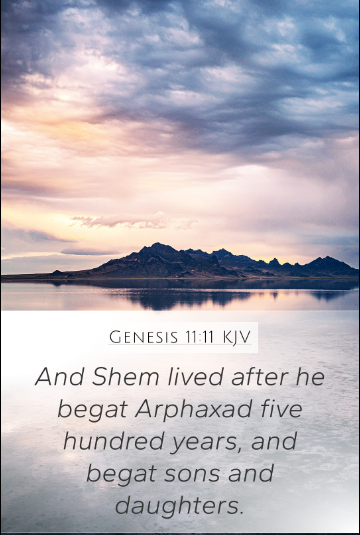 The present genealogy, moreover, being that of Shem, also serves as an adept literary-theological transition to the next thematic “half” of Genesis.
The present genealogy, moreover, being that of Shem, also serves as an adept literary-theological transition to the next thematic “half” of Genesis.
The expectation is thus laid that the present genealogy of Shem will likewise be followed by a narrative episode involving the making of a shem (“name”) for a man.
The previous verse began this genealogy linking Shem to Abraham and the Israelites. Shem fathered Arpachshad two years after the flood when Shem was 100 years old.
This verse now establishes the pattern for the rest of the genealogy, revealing how long Shem lived after the birth of the next in the line.
Putting the two ages together, Shem lived to be 600 years old, allowing him many years to have other sons and daughters as humanity set about refilling the earth with people.
Verse 10 was the last mention of the flood found in Genesis, setting this passage up as a milestone. In the same vein, this genealogy does not focus on phrases such as “and then he died,” as did the genealogy of chapter 5.
Genesis 11:12
And Arphaxad lived five and thirty years, and begat Salah:
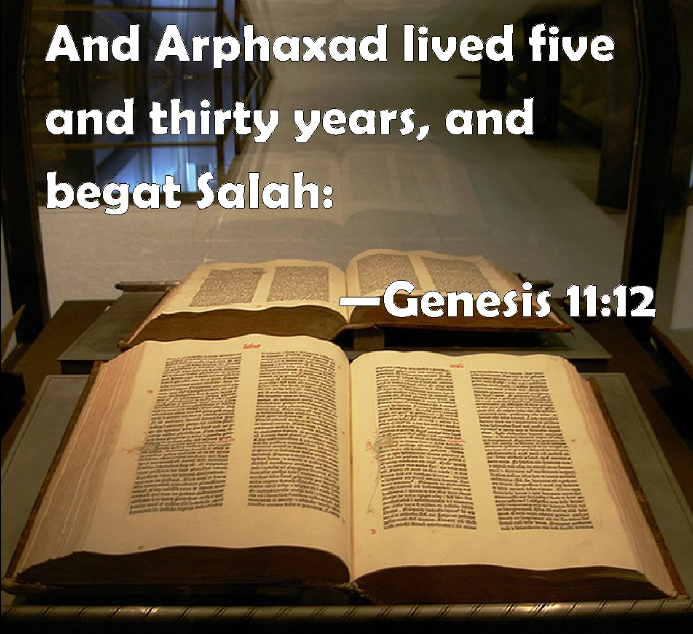 Observe here, That nothing is left upon record concerning those of this line, but their names and ages; the Holy Ghost seeming to hasten thro’ them to the story of Abraham.
Observe here, That nothing is left upon record concerning those of this line, but their names and ages; the Holy Ghost seeming to hasten thro’ them to the story of Abraham.
How little do we know of those that are gone before us in this world, even those that lived in the same places where we live!
Or indeed of those who are our contemporaries, but in distant places. That there was an observable gradual decrease in the years of their lives.
Shem reached to 600 years, which yet fell short of the age of the patriarchs before the flood; the three next came short of 500.
The line from Noah to Abraham follows through Shem to Arpachshad and now to Shelah. This is a noteworthy point in Genesis due to the age of Arpachshad when he fathers Shelah: “only” 35 years old.
This is a drastic reduction in the age of having children when compared to the pre-flood era (Genesis 5).
Of course, the genealogies listed prior to the flood don’t demand those children were the first-born, so those patriarchs might well have had other, earlier children.
And yet, it’s significant that the ages associated with children are decreasing, as are the lifespans.
Whether as a result of the world being damaged by the flood (Genesis 7:22–24), or by God’s direct intervention (Genesis 6:3), humanity’s lifespans will taper off very quickly in the generations following Noah.
To multiply and fill the earth, people had to start having children at much younger ages.
Genesis 11:13
And Arphaxad lived after he begat Salah four hundred and three years, and begat sons and daughters.
 In all, he lived four hundred and thirty eight years; Not mentioned by name: he died, as the above and a Jewish writer says he died in the forty eighth year of Isaac, and who also says, that in his days they began to build the city of Babel.
In all, he lived four hundred and thirty eight years; Not mentioned by name: he died, as the above and a Jewish writer says he died in the forty eighth year of Isaac, and who also says, that in his days they began to build the city of Babel.
After fathering Shelah, Arpachshad lived another 403 years and had other children. Adding the numbers together, Arpachshad lived to be 438 years old.
As with other verses, this statement supports a rapid decline in human lifespans after the flood.
While ancient figures such as Noah lived nearly a thousand years (Genesis 5), the generations following Abram (Genesis 11:19–26) will be lucky to live beyond a century.
Genesis 11:14
And Salah lived thirty years, and begat Eber:
 He had a son born to him five years sooner than his father had. This man was the progenitor of the Hebrews (i.e., Eber’s descendants).
He had a son born to him five years sooner than his father had. This man was the progenitor of the Hebrews (i.e., Eber’s descendants).
The line from Noah to Abraham follows through Shem to Arpachshad to Shelah and now to Eber. The Eberites and their descendants became a well-known people (Numbers 24:24).
As compared to the generations listed prior to the flood (Genesis 5), this verse presents an earlier age of fatherhood, and a shorter lifespan.
This is a trend which will continue through the genealogy, as man’s life rapidly shortens leading up to the birth of Abram (Genesis 11:19–26).
Genesis 11:15
And Salah lived after he begat Eber four hundred and three years, and begat sons and daughters.
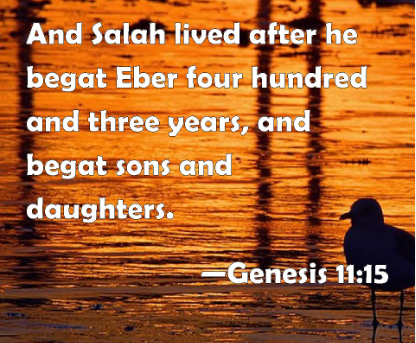 In all, he lived four hundred and thirty three years.
In all, he lived four hundred and thirty three years.
After fathering Eber, Shelah lived another 403 years and had other children. Adding the numbers together, Shelah lived to be 433 years old.
Patriarchs of the pre-flood world lived close to a thousand years (Genesis 5), and aren’t directly said to have had children until having lived more than a century (Genesis 5:3).
As mankind spreads after the flood, these lifespans rapidly decrease.
By the time of Abram, a person would be lucky to live beyond a century. And, in stark contrast to the pre-flood world, the prospect of having children near the age of 100 would become incredible (Genesis 17:17).
This might have been due to God’s direct influence (Genesis 6:3), or simply as a consequence of living on a harsher, less-ideal planet after the flood.
Genesis 11:16
And Eber lived four and thirty years, and begat Peleg:
 Eber lived a total of 464 years. This distinguishes him as the longest living person who was born after the flood.
Eber lived a total of 464 years. This distinguishes him as the longest living person who was born after the flood.
The line from Noah to Abraham follows through Shem to Arpachshad to Shelah to Eber and now to Peleg. Peleg’s name apparently comes from a word that means “to divide.”
Genesis 10:25 tells us that in Peleg’s time the earth was divided, likely referring to the dispersion of the peoples that happened after God confused the languages in Babel (Genesis 11:1–9).
If so, the generations to come after Peleg will live in a drastically divided world.
This verse also continues a trend seen in the genealogy of Genesis 11: decreasing lifespans. Children are mentioned at younger ages, and years of life are much shorter.
This change takes a particularly dramatic jump in the time between Eber and Peleg—those living after the Tower of Babel seem to have lifespans around half of what they were prior to that incident (Genesis 11:17–19).
Genesis 11:17
And Eber lived after he begat Peleg four hundred and thirty years, and begat sons and daughters.
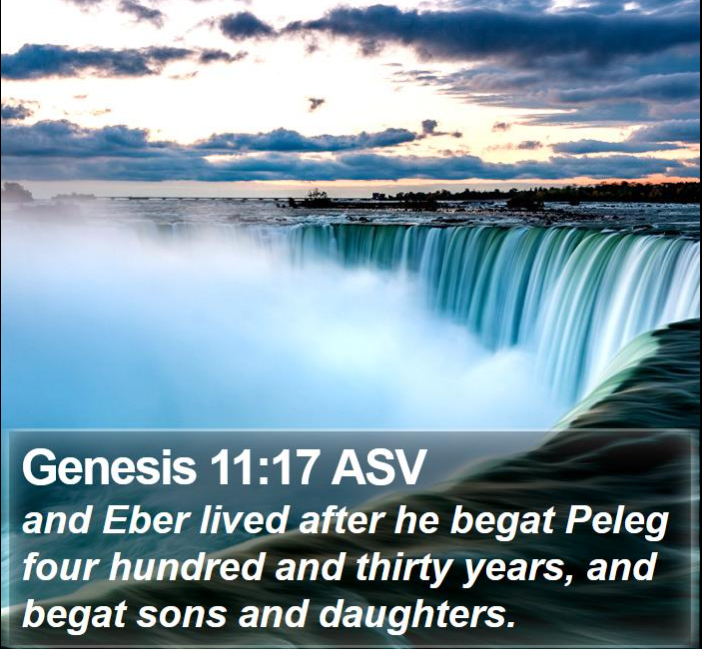 All the years of his life were four hundred and sixty four: One of which is elsewhere mentioned, whose name is Joktan, Genesis 10:25 according to the above Jewish writer, he died in the seventy ninth year of Jacob.
All the years of his life were four hundred and sixty four: One of which is elsewhere mentioned, whose name is Joktan, Genesis 10:25 according to the above Jewish writer, he died in the seventy ninth year of Jacob.
After fathering Peleg, Eber lived another 430 years and had other children. Adding the numbers together, Eber lived to be 474 years old.
Peleg is noteworthy for his connection to the incident at the Tower of Babel (Genesis 11:1–9). His name is associated with earth being “divided” (Genesis 10:25).
This link also helps to make sense of the sudden drop in lifespans.
While post-flood lives are already shortening, compared to the patriarchs of chapter 5, Peleg and those who follow him will live half as long as his father Eber.
Within a few more generations, man’s days are cut down again by half (Genesis 11:19–24).
Genesis 11:18
And Peleg lived thirty years, and begat Reu:
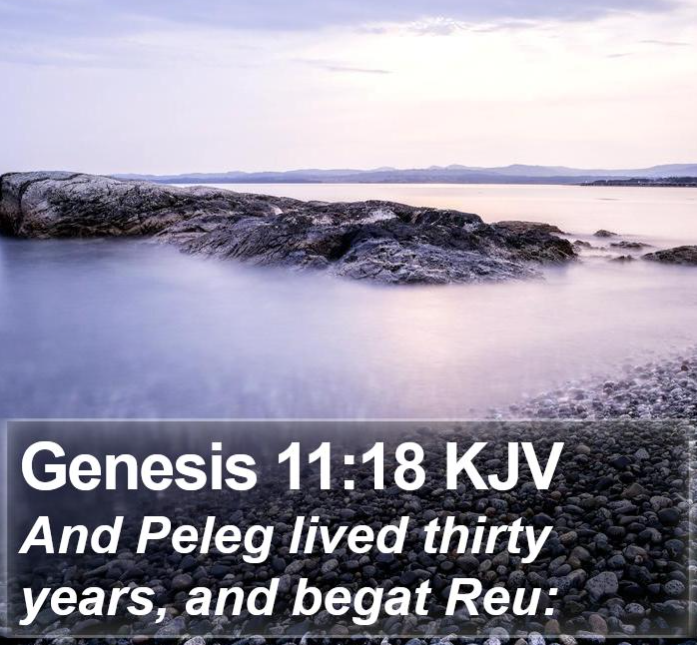 He was 30 years old when he fathered Reu.
He was 30 years old when he fathered Reu.
The line from Noah to Abraham follows through Shem to Arpachshad to Shelah to Eber to Peleg and now to Reu. The name Reu appears only here in the Old Testament, though it may be a variation on other names.
This verse is otherwise interesting for mentioning Peleg, a name associated with the division of humanity at the Tower of Babel (Genesis 10:25; Genesis 11:1–9).
Genesis 11:19
And Peleg lived after he begat Reu two hundred and nine years, and begat sons and daughters.
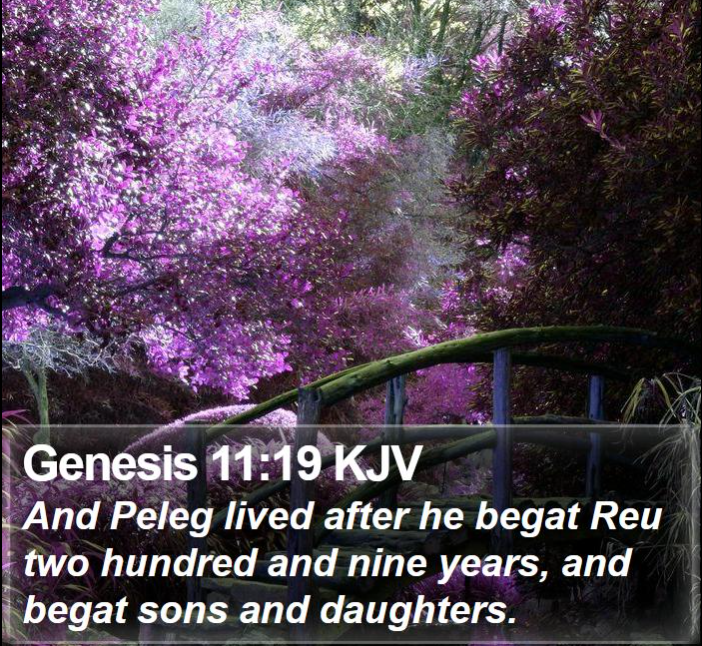 He was 239 years old, and he fathered other sons and daughters.
He was 239 years old, and he fathered other sons and daughters.
After fathering Reu, Peleg lived another 209 years and had other children. Adding the numbers together, Peleg lived to be 239 years old.
We notice that the lifespans continue to decrease dramatically the farther we move from the flood.
Some have speculated the conditions of the environment on the earth became less ideal for long lifespans after the flood.
Others see Genesis 6:3 as an indication that God acted directly to shorten human life—most likely for the same reason as His division of languages at Babel.
This was to limit man’s capacity for evil (Genesis 6:5; Genesis 11:6–7).
Peleg’s life is notably shorter than his father’s, as are those of the generations which follow.
Genesis 11:20
And Reu lived two and thirty years, and begat Serug:
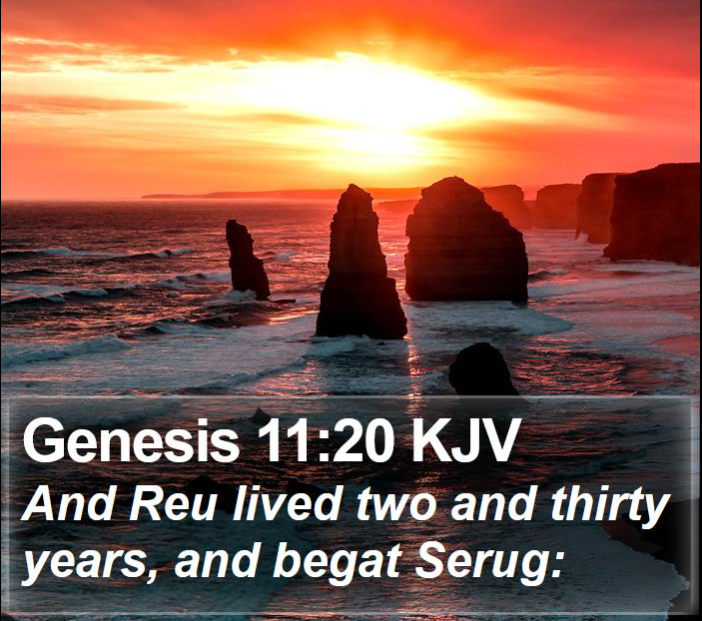 He was 32 years old when he fathered Serug.
He was 32 years old when he fathered Serug.
The line from Noah to Abraham follows through Shem to Arpachshad to Shelah to Eber to Peleg to Reu and now to Serug.
The name Serug may be associated with a place called Sarugi about 20 miles from Haran, where Abram’s family will eventually settle.
As shown in other verses, this generation will continue the trend of rapidly decreasing lifespans seen after the flood. From creation to the flood, man lives nearly a thousand years (Genesis 5).
From the flood to Peleg, man’s life is a few centuries.
From Peleg to Abram, human life drops to roughly a hundred years at best.
Genesis 11:21
And Reu lived after he begat Serug two hundred and seven years, and begat sons and daughters.
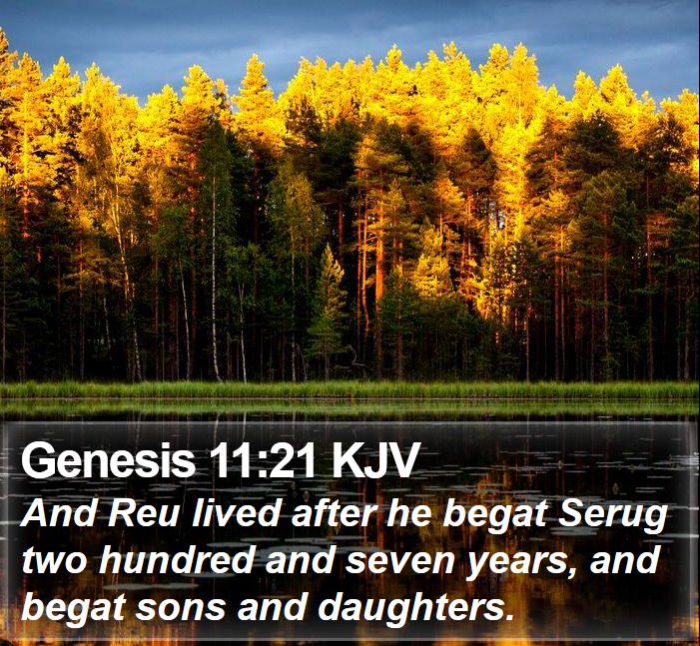 He was 239 years old, and he fathered other sons and daughters.
He was 239 years old, and he fathered other sons and daughters.
After fathering Serug, Reu lived another 207 years and had many other children. Adding the numbers together, Reu lived to be 239 years old.
This is a noticeably shorter life than his grandfathers, such as Shelah and Eber (Genesis 11:15–17).
It’s also drastically less than early men such as Adam and Seth (Genesis 5). This trend will continue until the era of Abram, when the definition of “old age” reaches the same general outlines we see in the modern world.
FROM SHEM TO ABRAHAM part-2
Genesis 11:22-32 KJV
[22] And Serug lived thirty years, and begat Nahor:
[23] And Serug lived after he begat Nahor two hundred years, and begat sons and daughters.
[24] And Nahor lived nine and twenty years, and begat Terah:
[25] And Nahor lived after he begat Terah an hundred and nineteen years, and begat sons and daughters.
[26] And Terah lived seventy years, and begat Abram, Nahor, and Haran.
[27] Now these are the generations of Terah: Terah begat Abram, Nahor, and Haran; and Haran begat Lot.
[28] And Haran died before his father Terah in the land of his nativity, in Ur of the Chaldees.
[29] And Abram and Nahor took them wives: the name of Abram’s wife was Sarai; and the name of Nahor’s wife, Milcah, the daughter of Haran, the father of Milcah, and the father of Iscah.
[30] But Sarai was barren; she had no child.
[31] And Terah took Abram his son, and Lot the son of Haran his son’s son, and Sarai his daughter in law, his son Abram’s wife; and they went forth with them from Ur of the Chaldees, to go into the land of Canaan; and they came unto Haran, and dwelt there.
[32] And the days of Terah were two hundred and five years: and Terah died in Haran.
Genesis 11:22
And Serug lived thirty years, and begat Nahor:
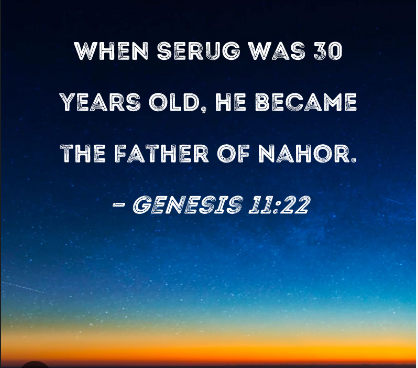 He was 30 years old when he fathered Nahor.
He was 30 years old when he fathered Nahor.
The line from Noah to Abram—later to be renamed Abraham—follows through Shem to Arpachshad to Shelah to Eber to Peleg to Reu to Serug and now to Nahor, Abram’s grandfather.
The length of a typical human life is drastically shrinking, compared to the era prior to the flood. There is a particularly large decrease seen after the Tower of Babel (Genesis 11:1–9), which is associated with the generation of Peleg (Genesis 11:17–19).
Genesis 11:23
And Serug lived after he begat Nahor two hundred years, and begat sons and daughters.
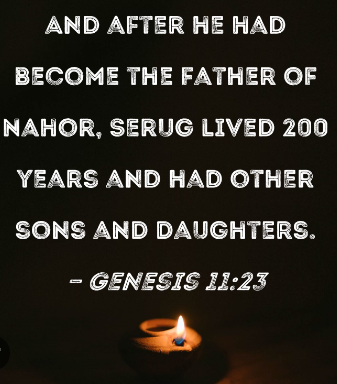 He was 230 years old when he fathered other sons and daughters.
He was 230 years old when he fathered other sons and daughters.
After fathering Nahor, Serug lived another 200 years and had other children. Adding the numbers together, Serug lived to be 230 years old.
Generations immediately following the Tower of Babel (Genesis 11:1–9), such as those of Peleg (Genesis 10:25; 11:6–7), will live half as long as their predecessors. Their children will live even less than that.
This culminates in the generations of people such as Abram and Sarai—later renamed Abraham and Sarah—whose lives stretch to the same general length we see in the modern world.
Genesis 11:24
And Nahor lived nine and twenty years, and begat Terah:
 He was 29 years old when he fathered Terah.
He was 29 years old when he fathered Terah.
The line from Noah to Abram—later known as Abraham—follows through Shem to Arpachshad to Shelah to Eber to Peleg to Reu to Serug to Nahor and now to Abram’s father Terah.
At this point, the lifespans in Genesis have decreased to something similar to the modern pattern: man’s days are roughly a century, give or take.
This is strong contrast to the prior generations, who lived twice as long.
It’s a drastic change from those who lived prior to the Tower of Babel, who lived several centuries. And it’s a catastrophic drop from the ages allowed for the earliest men, who survived nearly a thousand years (Genesis 5).
The story of Terah and his son, Abram, will lead into the foundations of the nation of Israel. Soon, God will begin enacting His far-reaching plan to fulfill the promise of restoration made in Genesis 3:15.
Genesis 11:25
And Nahor lived after he begat Terah an hundred and nineteen years, and begat sons and daughters.
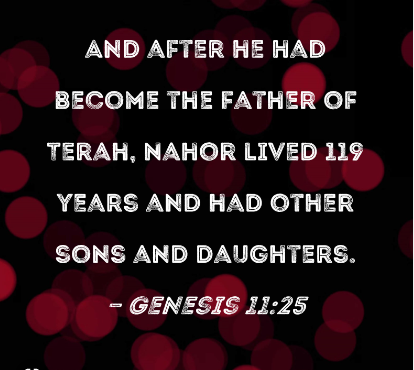 He was 148 years old when he fathered other sons and daughters.
He was 148 years old when he fathered other sons and daughters.
After fathering Terah, Nahor lived another 119 years and had other children. Adding the numbers together, Nahor lived to be just 148 years old, the shortest lifespan yet recorded following the flood.
This seems to follow God’s comment in Genesis 6:3, which might have been a direct act on His part to limit man’s capacity for evil (Genesis 6:5).
Based on the rapid drop in lifespan seen after the Tower of Babel (Genesis 11:1–9), this is also likely driven by the hardships of living in a scattered, fallen world.
Genesis 11:26
And Terah lived seventy years, and begat Abram, Nahor, and Haran.
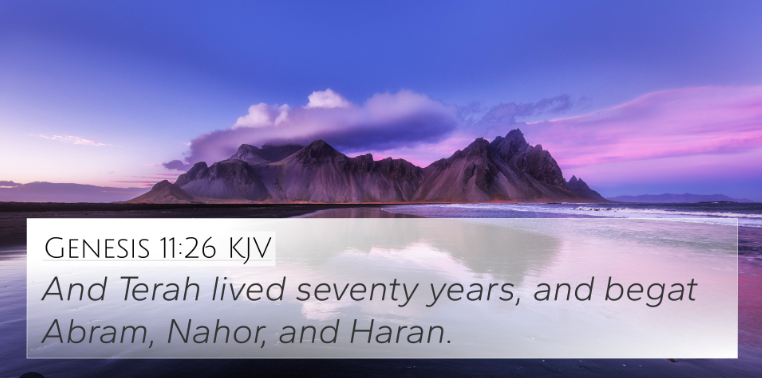 This was the age that Terah began to father children. Abram was born later when Terah was 130 (c. 2165 B.C.). Cf 11:32 with 12:4.
This was the age that Terah began to father children. Abram was born later when Terah was 130 (c. 2165 B.C.). Cf 11:32 with 12:4.
The line from Noah to Abraham (Abram) is now complete. It follows through Shem to Arpachshad to Shelah to Eber to Peleg to Reu to Serug to Nahor to Terah and now to Abram.
The end of this genealogy includes the fact that Terah had three male children after living 70 years. In addition to Abram, one child is named after Terah’s father and the other shares the name of the city Haran.
Abram’s name apparently means something like “exalted father.” This is a major moment in the genealogy of mankind. Abram will later be renamed Abraham.
Abraham’s relationship to God will be the cornerstone of three major modern world religions: Judaism, Christianity, and Islam. Abraham will be called by God (Genesis 12:1), and given special blessings (Genesis 12:2–3).
His grandson, Jacob, will be renamed Israel, fathering the nation God will designate as His chosen people.
THE DESCENDANTS OF TERAH
Genesis 11:27
Now these are the generations of Terah: Terah begat Abram, Nahor, and Haran; and Haran begat Lot.
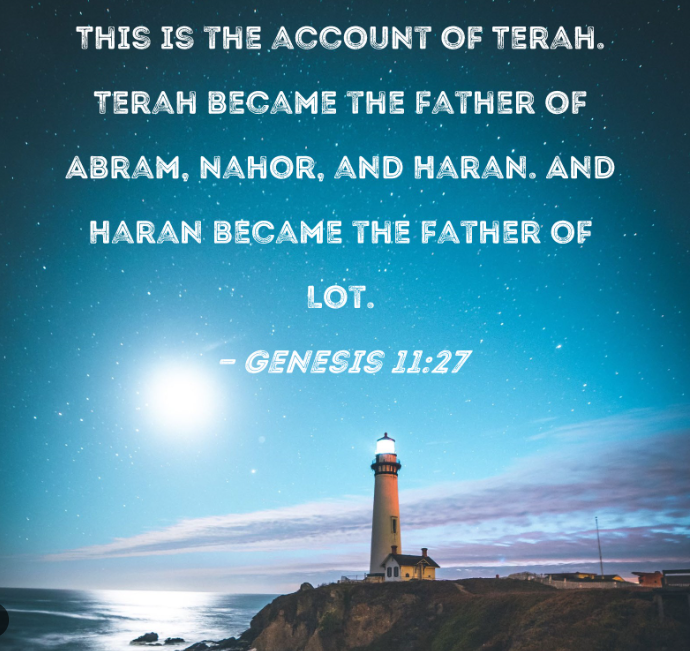 Now we see why the author focuses on Shem: it is his line that leads to Terah, the father of Abram.
Now we see why the author focuses on Shem: it is his line that leads to Terah, the father of Abram.
The previous section contained a direct genealogy from Noah’s son Shem to Abram. Now a new section is introduced under the heading of “the generations of Terah.”
This long section includes the entire life of Abram through Genesis 25:11. It’s not clear why the section is described as the generations of Terah, when the focus is almost entirely on the life of Abram.
Joshua 24:2 reveals that Terah and his father Nahor worshipped false gods. Since both Ur and Haran are known to have been centers of moon worship, it’s possible they worshiped moon gods.
Both men lived after the dispersal of humanity following the building of the Tower of Babel (Genesis 11:1–9).
Since Terah named one of his sons Haran, and then later moved to Haran, some scholars speculate that Terah had moved to Ur of the Chaldeans from there before moving back again.
Terah also fathered Nahor, named for his own father, and Abram “when he had lived 70 years” (Genesis 11:26). Haran fathered Lot, Abram’s nephew, a man who will play a large role in Abram’s story.
Lot will also play a central role in one of the Old Testament’s most dramatic incidents of divine judgment: the destruction of Sodom and Gomorrah (Genesis 18—19).
Genesis 11:28
And Haran died before his father Terah in the land of his nativity, in Ur of the Chaldees.
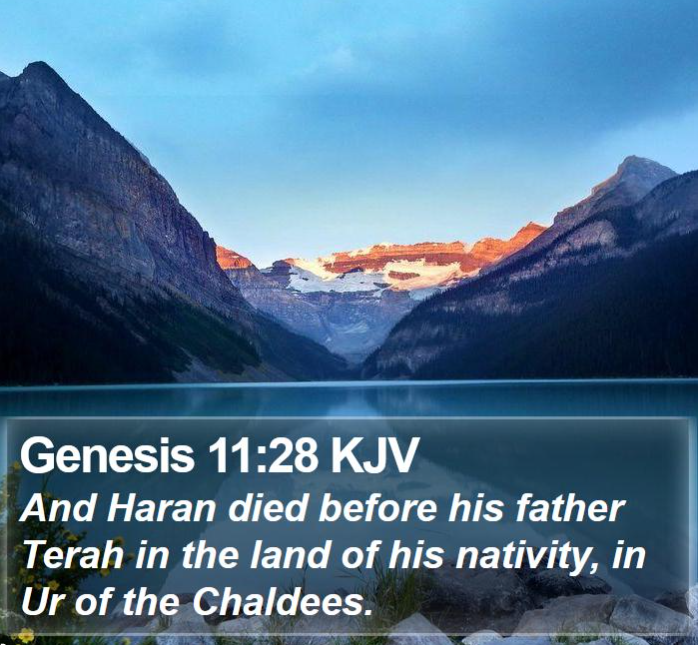 A prosperous, populous city in Mesopotamia.
A prosperous, populous city in Mesopotamia.
Haran, one of the three sons of Terah, died long before Terah did. At the time he died, the family home was in a region known as Ur of the Chaldeans, possibly in modern day southern Iraq.
Haran lived long enough to father children such as Milcah, Iscah, and Lot. This makes Lot a grandson of Terah, and the nephew of Abram. This relationship will prove to be important in Genesis.
Lot and Abram will see their paths cross many times. Abram will lead a rescue operation to save Lot from capture (Genesis 14).
After establishing a relationship with God, Abram will be renamed Abraham, and soon after this, he will pray for the people of Sodom, where Lot is living. Lot, once again, has to be rescued from destruction (Genesis 19).
Genesis 11:29
And Abram and Nahor took them wives: the name of Abram’s wife was Sarai; and the name of Nahor’s wife, Milcah, the daughter of Haran, the father of Milcah, and the father of Iscah.
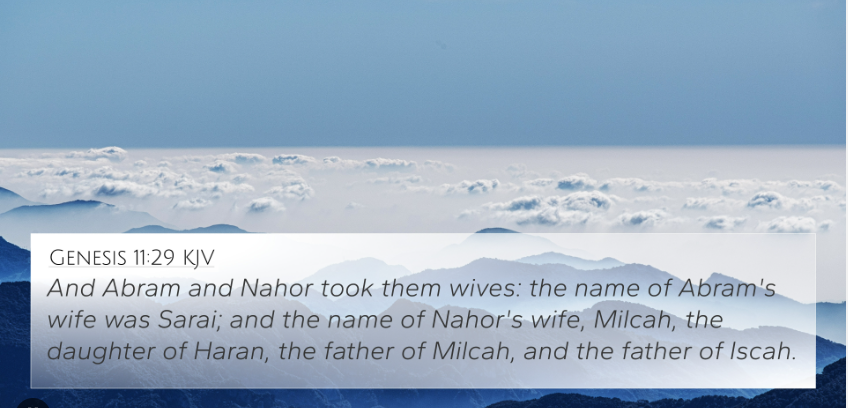 Sarai means “Princess,” implying a person of noble birth. Sarah (as she is later called; see 17:15) has the same meaning. The name Milcah is related to the verb that would be translated “to reign” and means “Queen.”
Sarai means “Princess,” implying a person of noble birth. Sarah (as she is later called; see 17:15) has the same meaning. The name Milcah is related to the verb that would be translated “to reign” and means “Queen.”
Evidently, Nahor married his niece. We learn later that Sarai was Abram’s half sister.
Several complicated family relationships are described in this verse. First, Abram married Sarai—who would later be renamed Sarah.
We know from Genesis 20:12 that Sarai was Abram’s half-sister, the daughter of his father Terah, but not from the same mother. Abram’s brother, Haran, had died leaving behind two children: Milcah and Iscah.
Abram’s other brother Nahor married Haran’s daughter Milcah.
Later, God’s Law for Israel would forbid marriages of family members so closely related. At this time, it seems, this was apparently a common practice and not forbidden by God.
Most scholars see the potential for genetic problems in the children of close relatives as the reason God prohibits incest.
This, most likely, would become a more and more serious issue as mankind continued to live in a fallen, corrupted, post-flood world.
Genesis 11:30
But Sarai was barren; she had no child.
 The sad fact that Sarai was barren marred her life and yet led to an opportunity for God to accomplish a miracle on her behalf (see 21:1–5).
The sad fact that Sarai was barren marred her life and yet led to an opportunity for God to accomplish a miracle on her behalf (see 21:1–5).
This brief verse sums up a driving force in the lives of Abram and Sarai: Sarai was barren and could not have children. Nevertheless, in the next chapter, God will promise them a child.
That promise will not be fulfilled for many years, and will test their faith deeply. When the promise is fulfilled, though, it will be the victorious reassurance that the God of Abraham is trustworthy and true.
TERAH MOVES FROM UR TO HARAN
Genesis 11:31
And Terah took Abram his son, and Lot the son of Haran his son’s son, and Sarai his daughter in law, his son Abram’s wife; and they went forth with them from Ur of the Chaldees, to go into the land of Canaan; and they came unto Haran, and dwelt there.
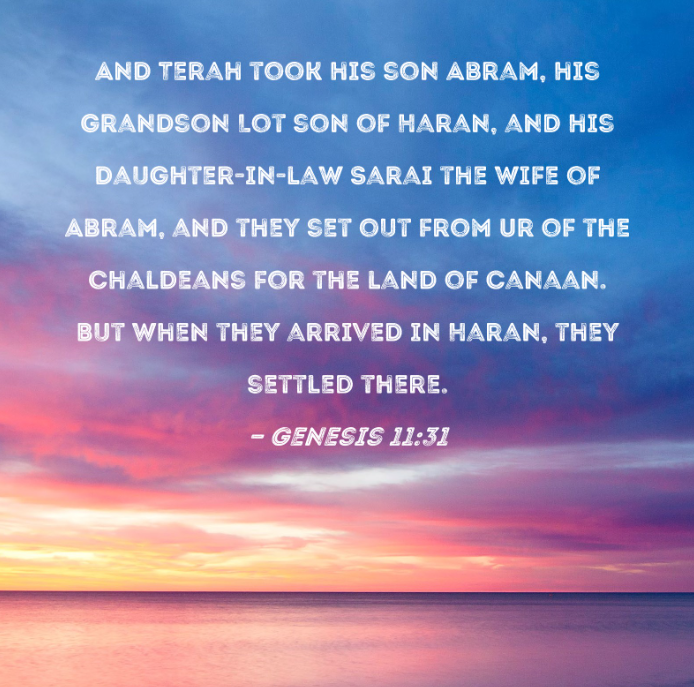 Terah’s clan had settled in the city of Ur (Genesis 11:28)—likely located in southern Mesopotamia at the mouth of the Euphrates River by the Persian Gulf (in modern Iraq).
Terah’s clan had settled in the city of Ur (Genesis 11:28)—likely located in southern Mesopotamia at the mouth of the Euphrates River by the Persian Gulf (in modern Iraq).
Modern archaeological research has revealed that this was among the most advanced civilizations in antiquity, with a well-developed legal and political system and a strong economy.
Ur was a major trade center, and its archaeological remains are impressive for the sophistication of its buildings and infrastructure. The city was one of the wealthiest in the world at the time Abram was born there.
Some think that Abram received his initial call from God to leave home while still in Ur. They base their conclusion on Genesis 15:7; Nehemiah 9:7; and especially Acts 7:2, 3.
On the other hand, Genesis 12:1–4 (in the context of 11:31, 32,) suggests that God appeared to Abram in the town of Haran.
And 12:1 refers specifically to Abram’s need to leave his “father’s house,” which he proceeds to do by leaving Haran with only Lot and the respective families.
A trip from Ur would not be entirely consistent with this command, since Abram’s father, Terah, left Ur with him. Perhaps God had already appeared to Abram in Ur and then came to him again after his father died (11:32).
A command to depart from Ur would be consistent with the larger story line of God’s creation and re-creation that runs through the early chapters of Genesis.
After the creation was ruined by sin (Genesis 6:1–7), God worked through Noah’s family to renew the world following the flood.
While God had intended for humans to spread out and populate the earth (1:28; 9:1, 7), various clans attempted to stay together and build a large city, including the Tower of Babel (11:4).
God foiled this plan by scattering them (Genesis 11:5–9). Generations later, however, major cities like Ur emerged, with advanced political and economic systems and religions with a multitude of deities (see Joshua 24:2).
Another solution to human rebellion was needed. After leaving Ur, Terah decides to stop in Haran, a town that later becomes a major stop on the caravan trade network.
Haran is located in what is now southern Turkey, near the border of Syria.
While this appears to be an indirect route from Ur to Canaan, it reflects the practice of traveling northwest around the Syrian desert and then southwest near the Mediterranean coast.
No specific reason is given here for the family’s migration from Ur. Terah, Abram, and the whole family left their home and headed for the land of Canaan.
While that was their intended destination, they never reached it.
Instead, after traveling some 600 miles, they settle in Haran. Scholars speculate that perhaps Terah had lived in Haran previously, and was returning.
This might have been inspired by Haran’s death (Genesis 11:28), something which the inclusion of Haran’s son, Lot, seems to support.
Genesis 11:32
And the days of Terah were two hundred and five years: and Terah died in Haran.
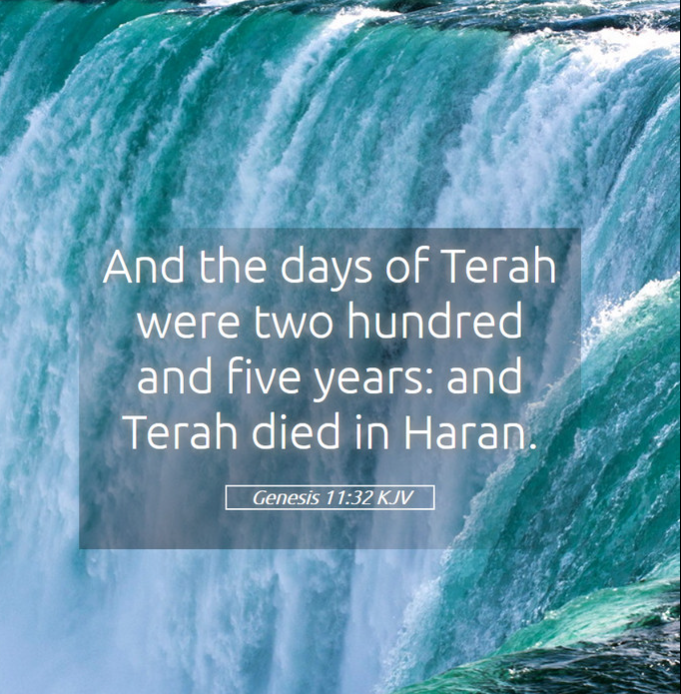 Terah’s death leaves Abram, apparently the oldest of his children (Genesis 11:26, 27), as the head of the clan.
Terah’s death leaves Abram, apparently the oldest of his children (Genesis 11:26, 27), as the head of the clan.
The chapter ends by telling us that Terah lived to be 205 years old before dying in Haran.
Although quite a short lifespan compared to those who lived before and immediately following the flood, Terah would have lived long enough to be alive for nearly all the major events of Abraham’s life, including the eventual birth of Terah’s grandson, Isaac.
I hope that you have really enjoyed this post,
Please Leave All Comments in the Comment Box Below ↓
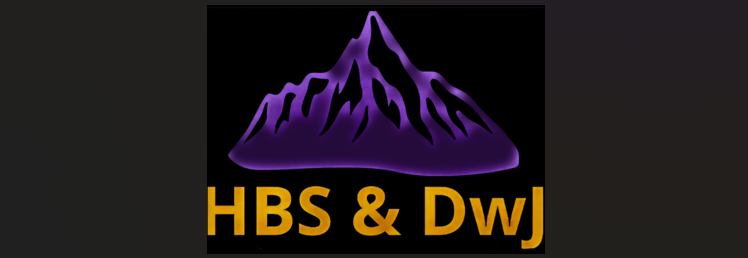
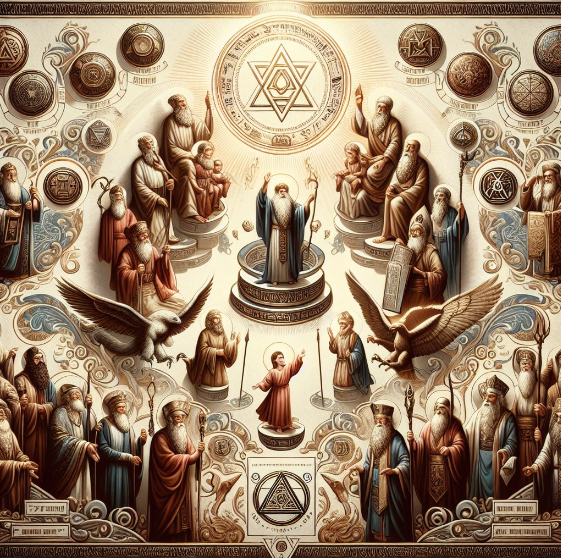
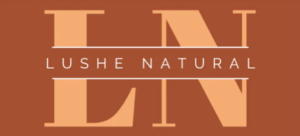

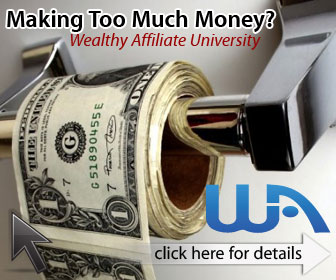








The article “From Shem to Abraham: The Line of Abram” by God in Our Lives every day provides a detailed exploration of the genealogical lineage from Shem to Abraham in the Bible.
It delves into the significance of this lineage and its connection to God’s plan for humanity.
The article does a commendable job of connecting the dots between the various figures in the lineage, showing how God’s promises and blessings were passed down from one generation to the next. It emphasizes the importance of ancestry and lineage in biblical history, as well as the significance of God’s faithfulness throughout the generations.
“From Shem to Abraham: The Line of Abram” is a thought-provoking article that sheds light on the genealogical lineage leading up to Abraham and its significance in God’s plan. It offers valuable insights into biblical history, emphasizing the faithfulness of God throughout generations and the pivotal role played by Abraham.
This article serves as a valuable resource for those seeking a deeper understanding of biblical genealogy and the unfolding of God’s purpose in history.
Hello again Pasindu,
I continue to hope that all is well with you.
Thank you for considering this episode as one which provides a detailed exploration, one that delves into the significance of lineage, one which emphasizes the importance of ancestry and lineage in biblical history, and for considering it a thought-provoking article.
Your continued participation and interest in the HBS & DwJ website is greatly appreciated. It is a real pleasure to continue having returning visitors such as yourself.
Thank you so much for continuing to comment, as well as your continuous input on each episode.
Blessings My Friend!
Thank you for sharing this insightful analysis of the genealogy of Shem in the book of Genesis.
It’s fascinating to see how the narrative transitions from the Tower of Babel incident to the lineage of Shem, ultimately leading to Abraham and the people of Israel. The emphasis on the continuity of God’s purpose despite the scattering and division of Noah’s descendants is a powerful reminder of divine providence.
The declining lifespans and the trend of having children at younger ages after the flood highlight the changing dynamics of human life and the world post-deluge.
The significance of the names and the associations with historical events, such as Peleg’s connection to the division of the earth, add depth to the narrative and provide a context for understanding the subsequent generations.
Hello Anoth,
Thank you for stopping by and considering From Shem To Abraham – The Line Of Abram an insightful analysis of the genealogy of Shem.
Speaking of understanding the subsequent generations, I often pray to GOD for understanding during my Holy Bible Study Sessions.
Thank You for commenting on this episode of HBS & DwJ.
Blessings My Friend!
I absolutely loved reading the blog post about the genealogical lineage from Shem to Abraham!
It was such an insightful and captivating read. You skillfully connected the dots between the generations, highlighting the significance of each individual in God’s grand plan.
I found it fascinating to see how God’s promises and blessings were faithfully passed down from one generation to the next. It really emphasizes the importance of ancestry and lineage in biblical history. You did a great job of showing the unwavering faithfulness of God throughout the generations.
One aspect that stood out to me was Terah’s journey from Ur to Haran. It’s amazing to see the obedience and trust required to fulfill God’s calling. And the fact that Terah lived long enough to witness the major events in Abraham’s life, including the birth of Isaac, adds a poignant touch.
Hello again israel,
Thank you for commenting on another HBS & DwJ Podcast episode.
It pleases me to learn that you absolutely loved reading about the genealogical lineage from Shem to Abraham, and about how it was such an insightful and captivating read. This definitely lets me know that the content is doing its job, by producing results.
Deuteronomy 7:9-10 KJVS tells us:
[9] Know therefore that the Lord thy God, he is God, the faithful God, which keepeth covenant and mercy with them that love him and keep his commandments to a thousand generations;
[10] And repayeth them that hate him to their face, to destroy them: he will not be slack to him that hateth him, he will repay him to his face.
Thank you for your adoration concearning this information, and thanks again for commenting.
Blessings My Friend!
As a beginner with an interest in biblical genealogy, I find the article’s focus on the line of Shem and the genealogies in Genesis fascinating.
I can see how these genealogies serve as a bridge between different narrative episodes and help establish the origins of important figures, like Abraham, in the biblical context.
One question I have is about the significant decrease in lifespans mentioned in the genealogies after the flood. It seems that people in the pre-flood era lived much longer, but their descendants saw a rapid decline in their lifespans.
What could be the reason behind this drastic change?
Is it simply due to the hardships of living in a post-flood world, or does the Bible suggest any other reasons for the shorter lifespans in the generations after the flood?
Hello again skamalka,
Thank you for stopping by, continuing to add value to this HBS & DwJ Platform.
When we, deliberately or inadvertently, behave in a way that is detrimental to our spiritual improvement, it grieves the Holy Spirit; in the same way that a loving parent is grieved when his or her child behaves in a self-destructive manner.
When mankind had become corrupted in the period preceding the flood, it grieved God, so He said: ‘My spirit shall not abide in man for ever, for he is flesh; his days shall be a hundred and twenty years’ (Genesis 6:3).
Your comments and questions are definitely appreciated, I’d love to hear back from you about other episodes.
Thanks for continuously stopping by,
Blessings My Friend!
The article masterfully delves into the lineage of Shem, skillfully weaving together genealogy, historical context, and religious themes.
The intricate details provided about each descendant, their ages, and their roles in the unfolding narrative exhibit the author’s meticulous research and storytelling prowess. It’s evident that the Tower of Babel incident serves as a pivotal point, connecting the development of nations and languages to the generations that follow. The way the author traces the decline in lifespans from pre-flood eras to post-Babel times is both thought-provoking and enlightening.
The anticipation for part 2, “From Shem to Abraham,” is palpable, as the article lays the foundation for the continuation of this engrossing saga. The gradual shift from the broader genealogies to the focal point of Abraham’s lineage adds depth and complexity to the narrative.
The inclusion of details such as Abram’s marriage to Sarai, her barrenness, and Terah’s journey to Haran enrich the story, setting the stage for future developments. It’s a testament to the writer’s skill that they manage to turn genealogical information into a captivating tale, leaving readers eagerly awaiting the next installment.
Hello, and Welcome to HBS & DwJ Ashley,
Thank you for your interest in From Shem To Abraham – The Line Of Abram. Thank you for reading, commenting, and for considering this a captivating tale, leaving readers eagerly awaiting the next installment.
Your addition to this information is definitely appreciated.
Blessings My Friend!